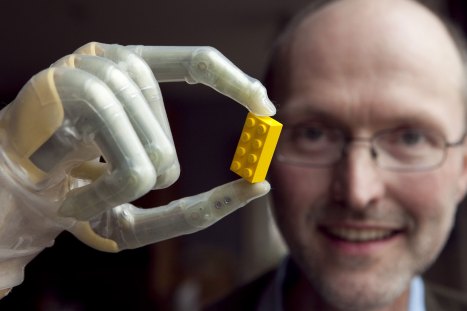 Most of us take little things like holding a glass or brushing our teeth for granted. For some people who have lost hands or fingers, these tasks can be impossible to accomplish without help or specialized equipment.
Most of us take little things like holding a glass or brushing our teeth for granted. For some people who have lost hands or fingers, these tasks can be impossible to accomplish without help or specialized equipment.
A new generation of bionic fingers has been unveiled by a company called Touch Bionics. The company is developing advanced upper-limb bionic technologies and has announced the official launch of its ProDigits bionic finger. ProDigits are the world’s first powered bionic solution for people who have lost fingers.
The ProDigits prosthetics are custom built for each application by clinicians to insure that they function ideally for the patient. ProDigits are controlled by using one of two methods. Either myoelectric sensors that register muscle signals from the residual finger or palm can be used or a pressure sensitive switch in the form of a force sensitive resistor or a touchpad can be used to control the fingers. The last approach relies on the remnant of the finger or the tissue surrounding the metacarpal bone to provide the necessary pressure to activate the finger.
One user of the ProDigits prosthetic Michael Bailey said, “Honestly, I had only put it [ProDigits] on for five minutes and I was getting it to work just fine. It feels like it belongs there, like it’s part of me.”
The Telegraph reports that the ProDigits device costs between £35,000 and £45,000 and requires no surgery. That works out to roughly $57,000 to $73,000 USD. The chances of patients’ insurance actually covering this prosthetic is slim meaning that the ProDigits system will be well out of the reach of most people who could benefit from the technology.
A range of coverings can be chosen by the patient including clear skins and a “livingskin” pattern that is natural looking. ProDigits hope to work with the National Health Service in the future for payments in Europe.
Editors' Recommendations
- Don’t buy the Meta Quest Pro for gaming. It’s a metaverse headset first
- This tech was science fiction 20 years ago. Now it’s reality
- Open-Source Leg: The quest to create a bionic limb that anyone can build
- Prosthetics that don’t require practice: Inside the latest breakthrough in bionics
- How to watch SpaceX launch its 20th resupply mission to the ISS today


